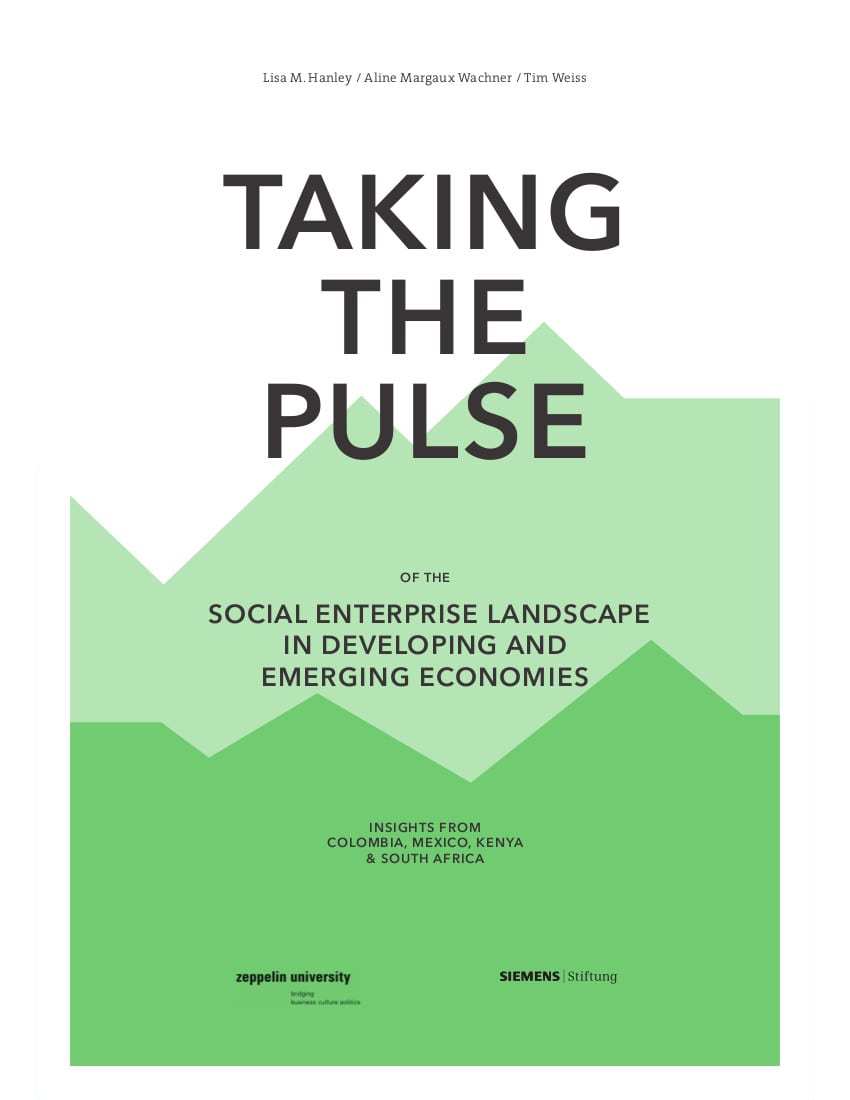 Profit-earning social enterprise may be trending among social investors, but it has an unusual set of challenges that don’t trouble other businesses.
Profit-earning social enterprise may be trending among social investors, but it has an unusual set of challenges that don’t trouble other businesses.
“Stakeholders from the public, private, and third sectors are increasingly giving their funds to profitable companies rather than public or nonprofit organizations,” Aline Margaux Wachner, a research fellow at Zeppelin University in Friedrichshafen, Germany, said in a statement.
At the same time, social enterprises are top-heavy with team members who have elite educations; they have trouble finding a good way to measure their impact in the communities where they work; and the fact that they need to earn a profit prevents them from providing services to the people who need them most: those who are too poor to pay.
Those are three findings from a longer collection of observations and recommendations published in May in a white paper by Wachner and colleagues at the International Research Network on Social Economic Empowerment, a collaboration by Siemens Stiftung and Zeppelin University.
Researchers surveyed 36 social investors and 286 social enterprises from Colombia, Mexico, Kenya, and South Africa to pinpoint problems and, crucially, to offer their recommendations.
View the paper here as a free pdf: Taking the Pulse of the Social Enterprise Landscape in Developing and Emerging Economies.
Two thought leaders on social enterprise gave us their reactions.
“To overcome the under-representation of local social entrepreneurs, more in-country capacity development is necessary” – Dr. Thane Kreiner, Santa Clara University
Elite educations
As many as 75 percent of the social entrepreneurs surveyed have at least a master’s degree. The problem with that figure, the paper’s authors say, is that it means that entrepreneurs from poor families with less education and local people from the countries where the social businesses operate might be under-represented. The authors recommend more inclusive investment, more training and business models that include people from developing countries.
“The survey’s findings confirm a number of our empirical observations,” Dr. Thane Kreiner Executive Director of the Miller Center for Social Entrepreneurship at Santa Clara University in Santa Clara, California, told E4C.
“Most of our alumni social enterprises report that human capital is their second biggest challenge (after financial capital). My conclusion is that to overcome the under-representation of local social entrepreneurs, more in-country capacity development is necessary. For instance, we’ve worked with the Global Alliance for Clean Cookstoves to develop and implement workshops that help local social entrepreneurs develop their business models so that they will be more attractive to impact investors,” Kreiner says.
“I’m not sure that the issue is education as much as it is confidence or an internally held narrative that an individual can make a difference” – Teju Ravilochan, Unreasonable Institute
Teju Ravilochan, Co-Founder and CEO of the Unreasonable Institute in Boulder, Colorado, said he can’t draw conclusions from the findings, but he suggested that education might be a door opener.
“I’m not sure that the issue is education as much as it is confidence or an internally held narrative that an individual can make a difference. When you don’t have education or resources, people around you tell you that you can’t do things. Whereas if you graduate from Stanford, people tell you you can do anything and believe it, too. They ask fewer questions of you – they just let you move forward as you’d like (this is all a generalization). As is always the case, the world’s opportunities are more accessible with means. Means to travel, to get help, to pay for support, etc. The world of social entrepreneurship probably wouldn’t be too different,” Ravilochan says.
It’s hard to measure impact
More than 60 percent of the people surveyed did not answer a question about the usefulness of the social impact data that they collected. The paper’s authors interpreted that as a “misalignment between social impact metrics and intra-organizational processes.” The authors recommend a redesign of reporting standards that would make reports to donors and investors match the kind of data that entrepreneurs need to improve their business. Those changes “can help to enhance the usefulness of measurement tools for social enterprises and therewith provide an important asset rather than a liability in fighting poverty in developing and emerging economies,” the authors write.
“The more tightly the impact model can be integrated into the business model, the more financially sustainable the enterprise” – Kreiner
“I do think that it’s hard to create and measure impact when that impact is not generated by making money. In other words, measurement of impact and embedding what it takes to create impact into organizational processes is easier when that’s all baked into what it takes to make money,” Ravilochan says. “But, inevitably, we need ventures that don’t have business models and impact models that are aligned. It’s extremely hard to provide affordable health care to the rural poor and make money doing it. This model almost always requires fundraising from someone who isn’t the end beneficiary. The challenge with these models is that you have to deliver and measure impact on top of getting money. That’s I think what makes it hard.
Kreiner compared the survey’s findings to those of an analysis of 350 of SCU’s Global Social Benefit Institute (GSBI) alumni in 60 countries and this thought piece that asks questions about how to measure social impact.
“Social impact is notoriously tough – and expensive – to measure. Even if enterprises appear to be in the same sector, their impact models may differ,” Kreiner says.”I call your attention to two conclusions. The first is that the greater the temporal separation between outputs of the social enterprise and the outcomes or impact, the harder it is to quantitatively measure impact… Qualitative impact assessment… is essential when quantitative metrics are too expensive or too far in the future to measure. Second, we don’t believe a single measurement tool is possible. From our experience and observations, we see that even well intentioned tools such as IRIS can place significant reporting burdens on social enterprises and may not relate to their key operational metrics. Most IRIS metrics are operational, not impact-focused.
“Figure out if you’re actually making a difference. Not for the world. But for yourself and so that you know how to guide your organization” – Ravilochan
Expert advice: How to measure impact
Ravilochan: “The main tip I have is: be authentic. If you’re in it for impact… really in it for impact… then measure your impact, however hard it is. Figure out if you’re actually making a difference. Not for the world. But for yourself and so that you know how to guide your organization. If you’re not in it for impact, then don’t measure it.”
Kreiner: “We recommend [that social enterprises] start first with the mission, then define the impact model, then the business model. The more tightly the impact model can be integrated into the business model, the more financially sustainable the enterprise and the higher the likelihood that the venture can successfully scale its impact. Aligning impact metrics with key activities of the enterprise makes impact assessment part of running the business rather than an additional use of resources. The chosen impact metrics can then be mapped to IRIS, if applicable. When impact is temporally distant from outputs of the enterprise, a logic model or theory of change is even more essential. Instead of a single “sector-wide measurement tool”, a framework that takes into account the temporal separation between outputs and impact will better enable social enterprises to align their operations and impact assessment.”
Can social enterprise help the poorest customers?
The survey’s authors drew a conclusion that social enterprises struggle to serve the poorest customers because the businesses depend on sales and profit to remain financially sustainable. They need to target customers that are able to pay in order to remain solvent. “Many social problems in developing and emerging economies can’t be solved profitably or require long-term efforts to create markets. Non-profit organizations are essential for that purpose,” the survey’s authors write. To overcome that hindrance, social enterprises should look for long-term supply contracts to buffer themselves against bankruptcy and provide leeway to serve non-paying or subsidized customers.
The researchers also recommend stronger cooperation between public, private, and civil sectors. “To protect non-profit social enterprises, action is required on the part of social investors in particular to provide more innovative financing instruments for non-profit social entrepreneurs,” the authors write.
Kreiner gives three reactions. First, “it is easier to develop earned-income models when social enterprises temporally proximate impact,” he says. “When possible, we encourage non-profit social enterprises to employ earned income models to offset the reliance on contributed revenue.”
The second point he makes is that “this section of the survey relegates the poor to consumers; a recent IFC report on Shared Prosperity reflects more current thinking about inclusive businesses and engaging the BoP versus simply selling to it.
There are social enterprises that empower poor communities as producers by helping them procure productive assets.”
And his final thought on the matter is that “pay-as-you-go technologies are decreasing the barriers for end consumers to adopt essential goods and solutions. In the end though, the conclusion that market-based mechanisms will not address all the needs of the poor is spot on, and particularly true of the extreme poor.”
Please find the full report here, and share your thoughts in the comments below: Taking the Pulse of the social enterprise landscape in developing and emerging economies

